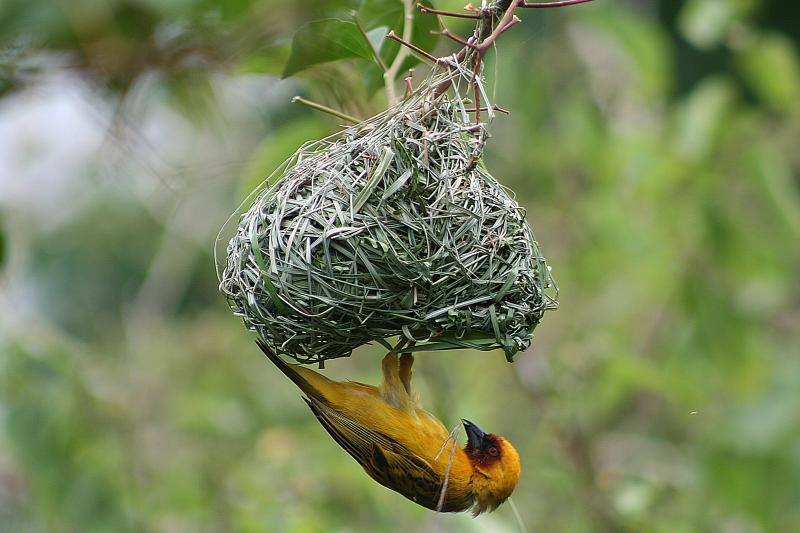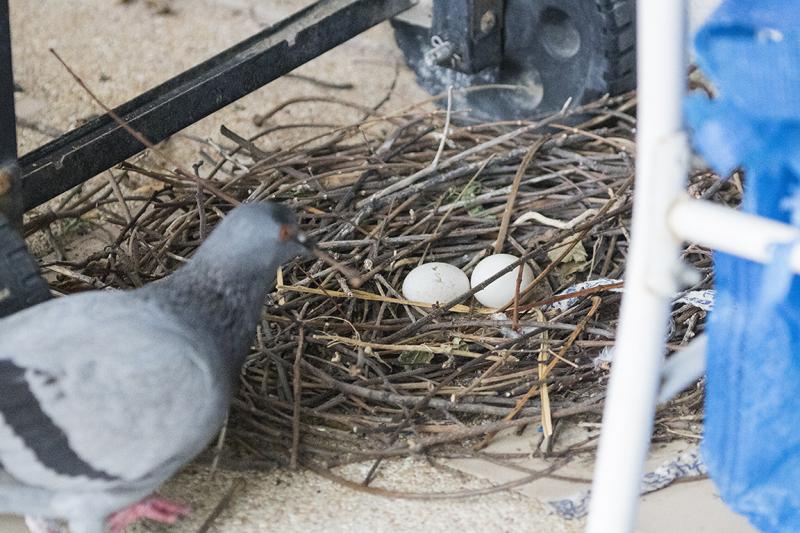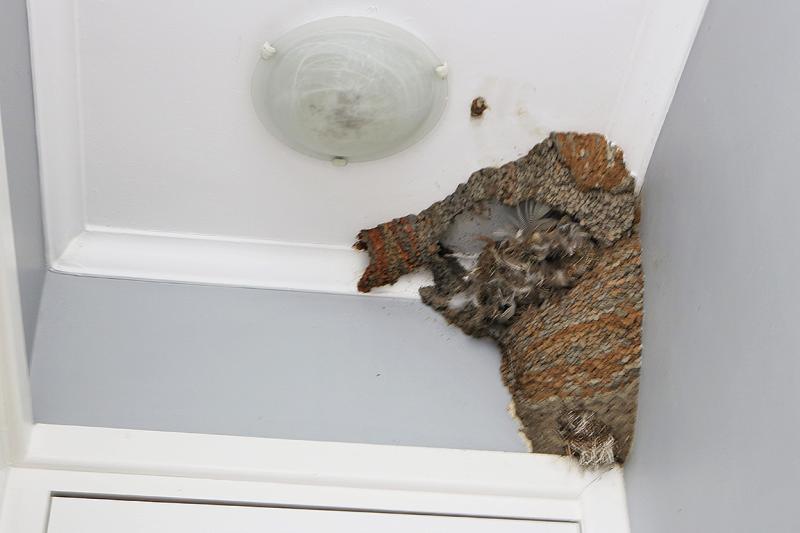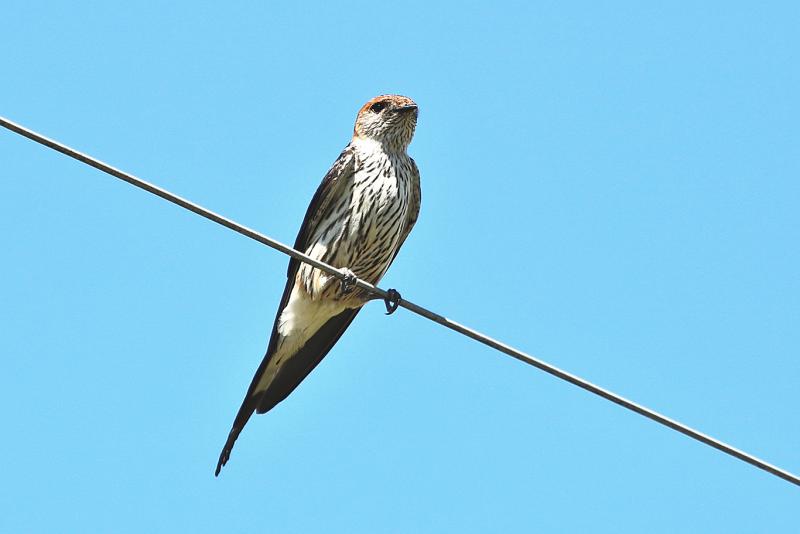3. Nest Building
Perhaps the most impressive skill shown by many species of birds is their abillity to build complex, dry and secure structures in which to lay eggs and rear young using only their beaks - and with support from their feet. Both inherited and acquired skills (according to research) enable these birds to gather mainly natural materials and weave or cement them into ingenious family homes. A convincing display of intelligence.

Paddyfield Pipit
The hard work begins with the collection of material for nest building. This paddyfield pipit believes in stuffing as much as possible into his beak to reduce the number of journeys he has to make to and from the nest which is built on the ground amongst grasses and shrubs.

Cape Weaver
The cape weavers are one of the most industrious and rigorous builders and their nests are closely woven, solid constructions made out of grasses. They often nest in conspicous places: the one above was one of several in the garden of a guesthouse in Montagu, Western Cape, South Africa.

Feral Pigeon
Some nests are better than others. This untidy, twiggy construction with eggs laid on bare concrete is not the worst nest I've seen and not bad for a member of the pigeon family who seem to find nest building challenging. Still, mum is conscientious enough to keep adding twigs even after she has laid her eggs. Photographed on a busy balcony in an apartment in Bangkok.

Greater Striped Swallow plus White-rumped Swift?
Mud Mansion
This grand palace painstakingly constructed over many years, was the pride and joy of the owner of a property on Thesen Island, Western Cape. It is built at the entrance to an annex at the top of a flight of stairs. It even seems to have a decorative feature in the variegated colours of the mud from which it is constructed. I never saw the builders; it was the wrong time of year for nesting and the residents were away on holiday but would surely return to add yet another storey to their mud extravaganza.
Mystery Builders
The owner of the property knew only that swallows built the nest and couldn't be more specific. Research suggests a combination of two species. The first is the greater striped swallow which collects soft mud and contructs a funnel entrance to its nest, in this case visible to the left of the main structure. The second is the white-rumped swift that frequently takes over the nest of the greater striped swallow and builds using feathers stuck together with saliva as visible around the main entrance. Who is the returning resident? I may find out one day.

Greater Striped Swallow
Photographed in the Drakensberg Mountains, South Africa.
More on nest construction in the chapter on Mating.